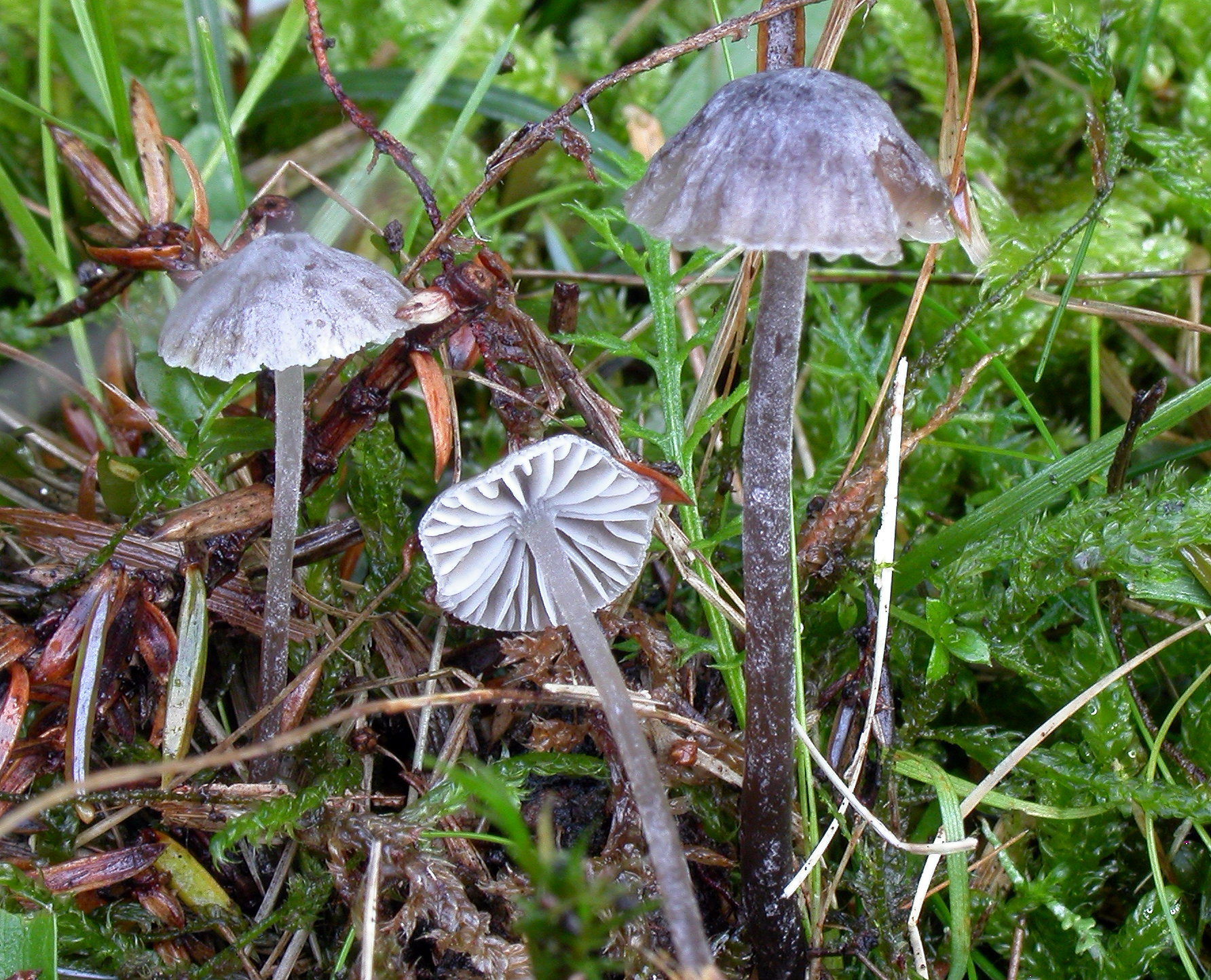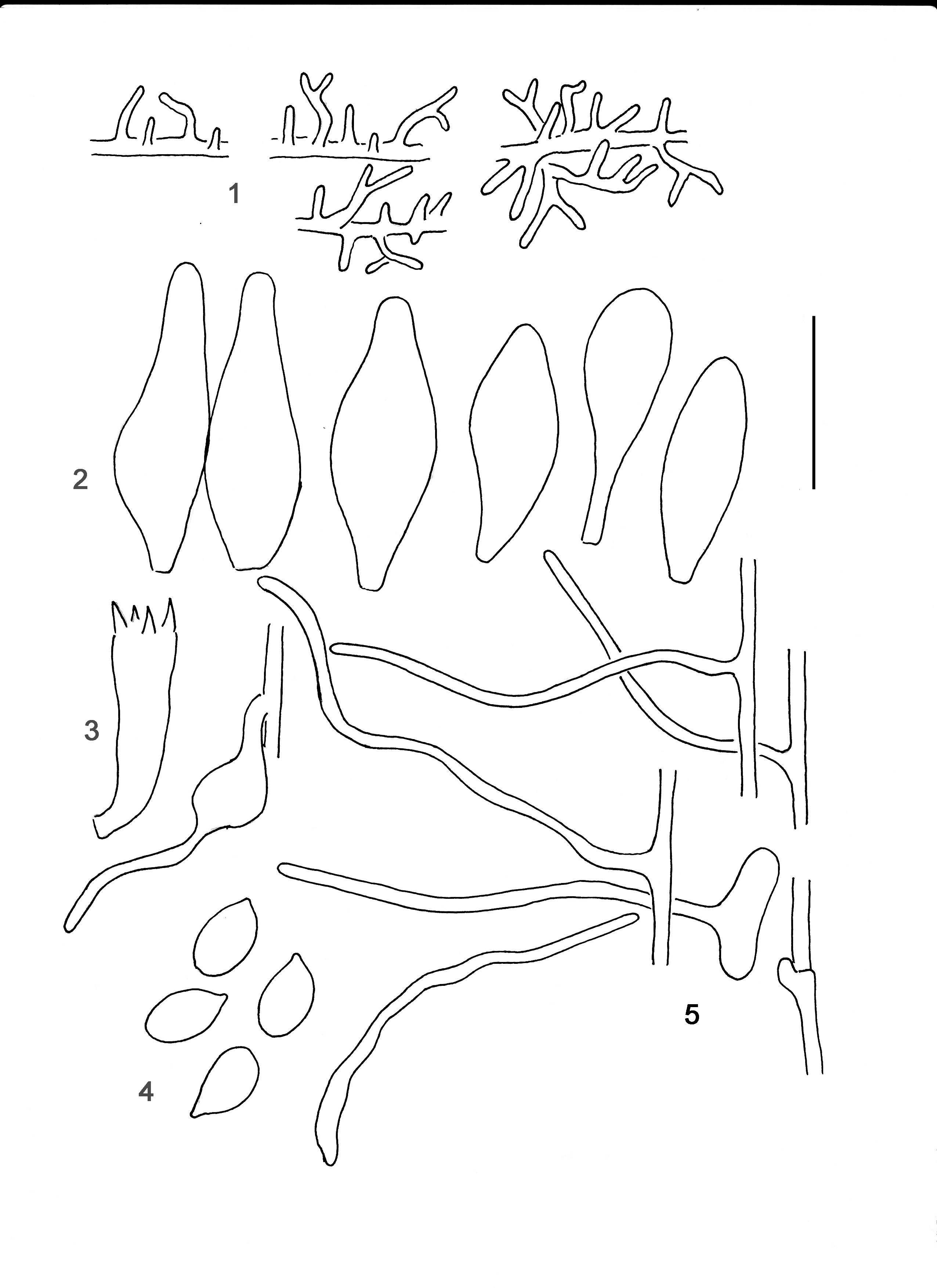Mycena cretata
Mycena cretata
- Innhold
- Description
- Ecology and distribution
Description
1. Hyphae of the pileipellis, 2. Cheilocystidia, 3. Basidium, 4. Spores, 5. Hyphae of the cortical layer of the stem with caulocystidia.
Cap 5-17 mm across, conical, parabolical to convex, with or without a small umbo, sulcate, translucent-striate, prominently white-pruinose, glabrescent, grey-brown or dark grey, turning paler grey, mostly with a pale brown centre. Gills 15-17 reaching the stem, adnexed, ±decurrent with a short tooth, with age veined and anastomosing, dorsally intervenose, grey to dark grey, sometimes blackish grey. Stem 30-70 x x-1-2 mm, cylindrical, equal, densely puberulous, glabrescent, brownish or grey brown, apex whitish or pale grey, the base fairly dark brown, with age turning grey-brown to silvery grey, base densely covered with long, coarse, flexuous, whitish fibrils. Odour nitrous. Basidia 24-30 x 6-8 µm, clavate, 4-spored, with sterigmata up to 9 µm long. Spores 7-11 x 4-5.5 µm, Q = 1.5–2.2, Qav = 1.8, pip-shaped, amyloid. Cheilocystidia 28-47 x 8-18 µm, forming a sterile band, clavate, fusiform to lageniform. Pleurocystidia similar. Lamellar trama dextrinoid. Hyphae of the pileipellis 2-5 µm wide, covered with simple to branched, flexuous or curved, cylindrical excrescences 2-18 x 1-2.5 µm, forming dense masses and tending to become somewhat gelatinized. Hyphae of the cortical layer of the stem 2-4 µm wide, smooth but occasionally covered with short excrescences near the terminal cells, producing numerous, simple to rarely forked, flexuous to fairly straight or curved, cylindrical, thin-walled, hair-shaped caulocystidia, often somewhat widened at the base, 25-180 x 1.5-3 µm. Near the apex of the stem the caulocystidia are more clavate or with an inflated base and a short neck, smooth or with a few coarse excrescences. Clamps observed at the base of the basidia and the cheilocystidia, and at the septa of the hyphae of the stipitipellis.
Ecology and distribution
On litter in moss under Juniperus communis. Autumn. Only known from two localities in southern Norway but is likely to occur elsewhere.

